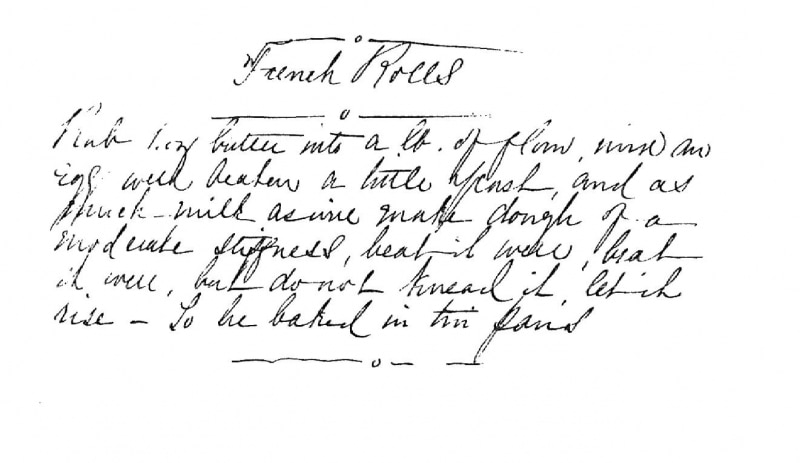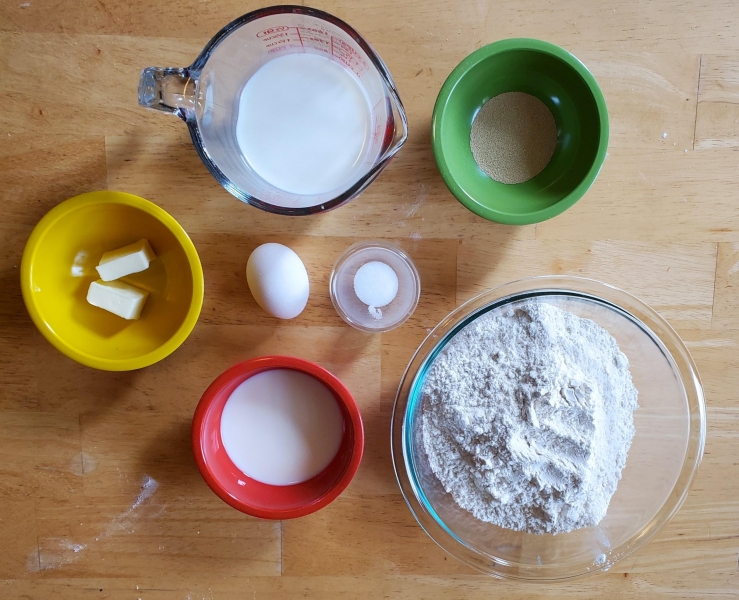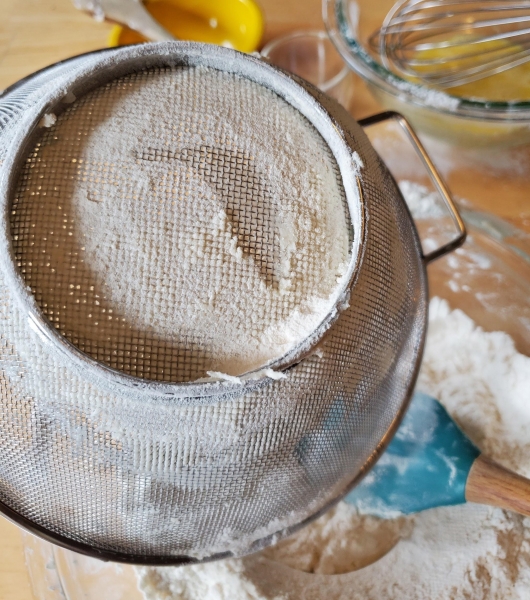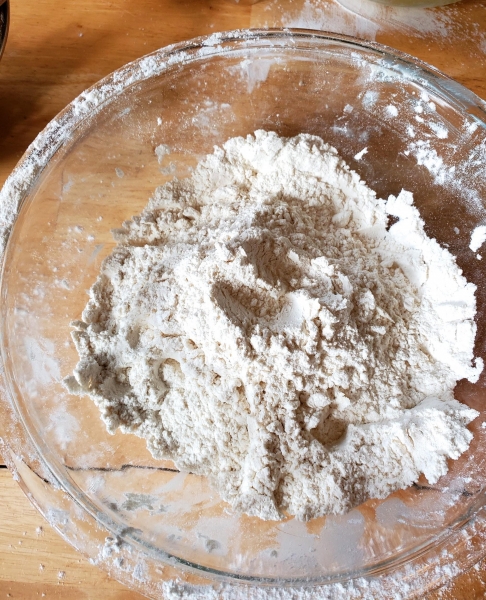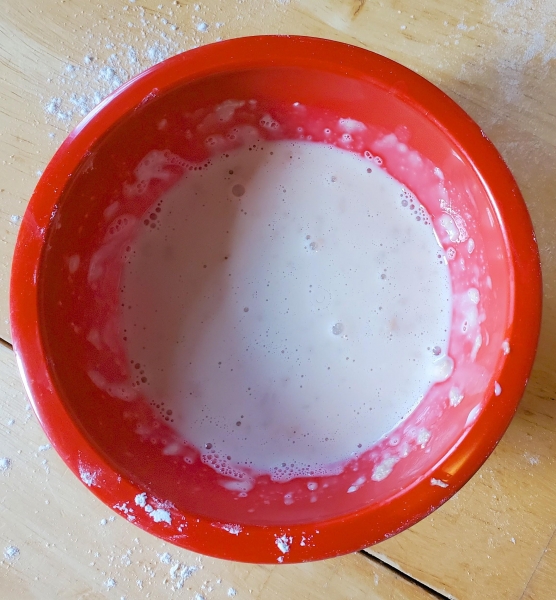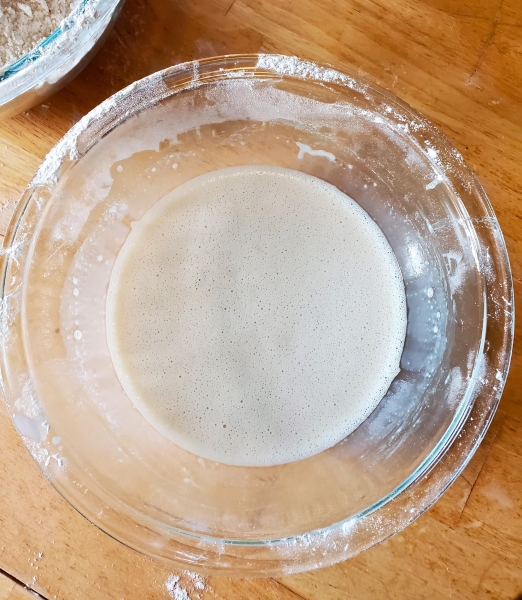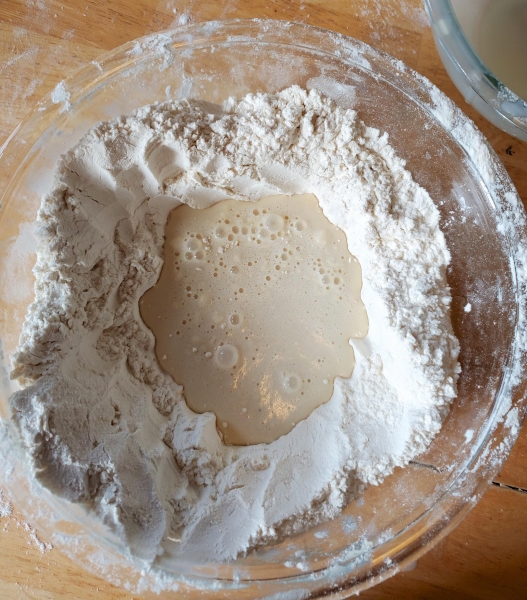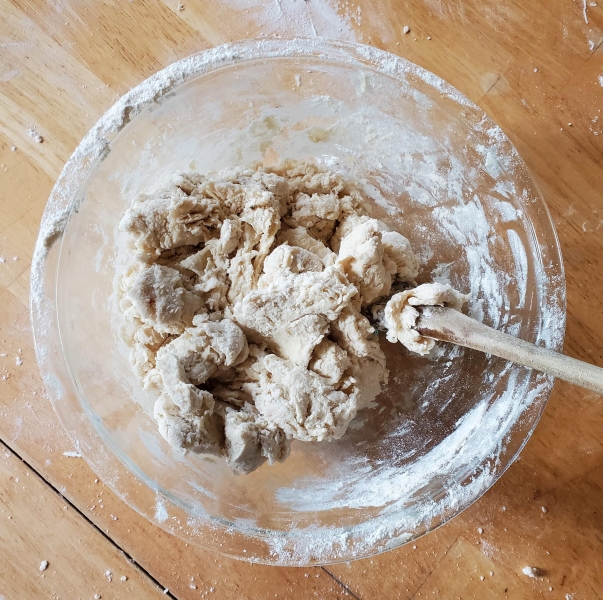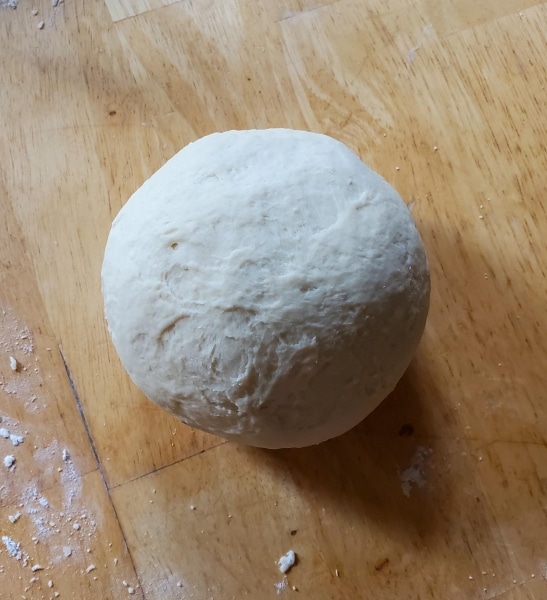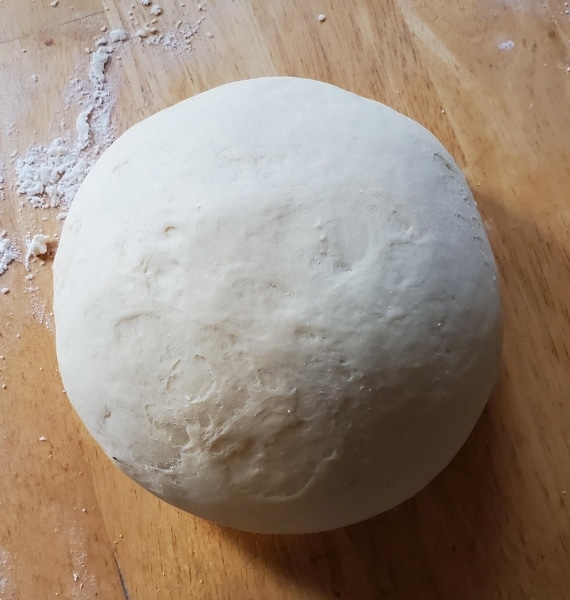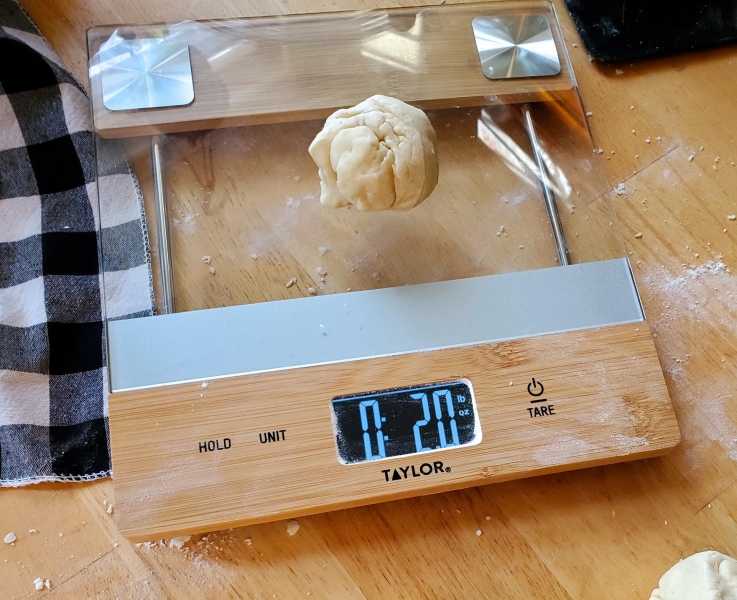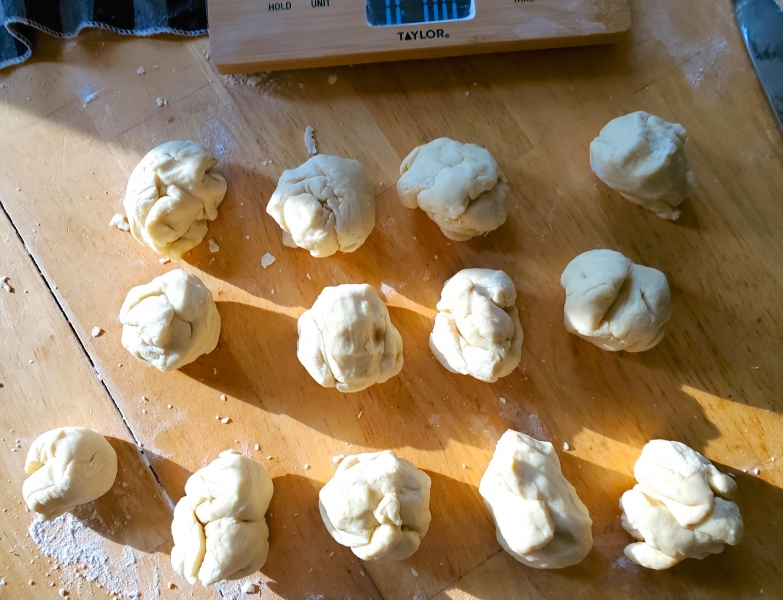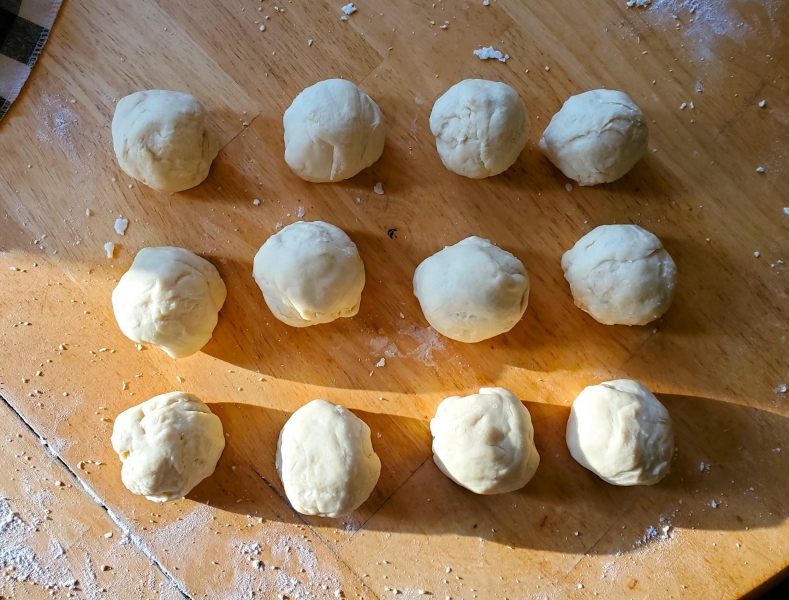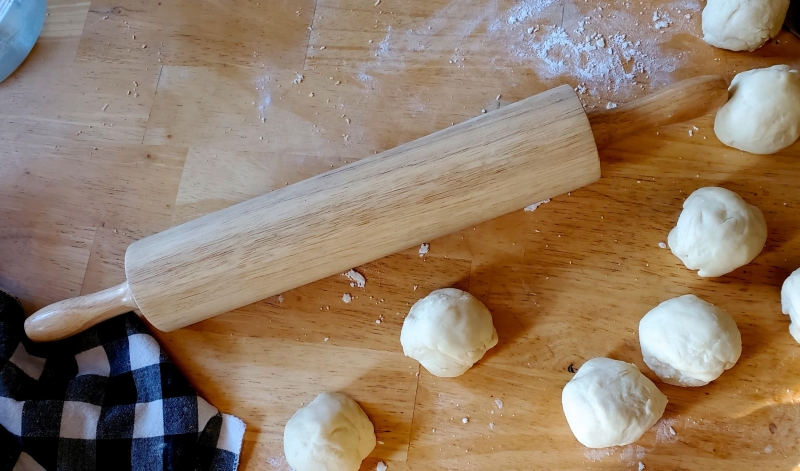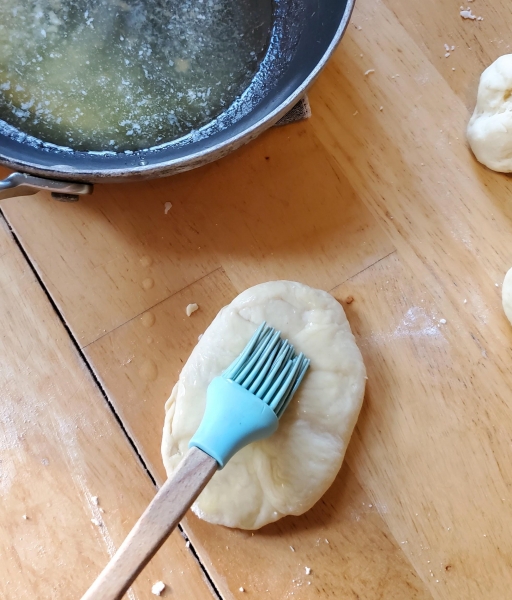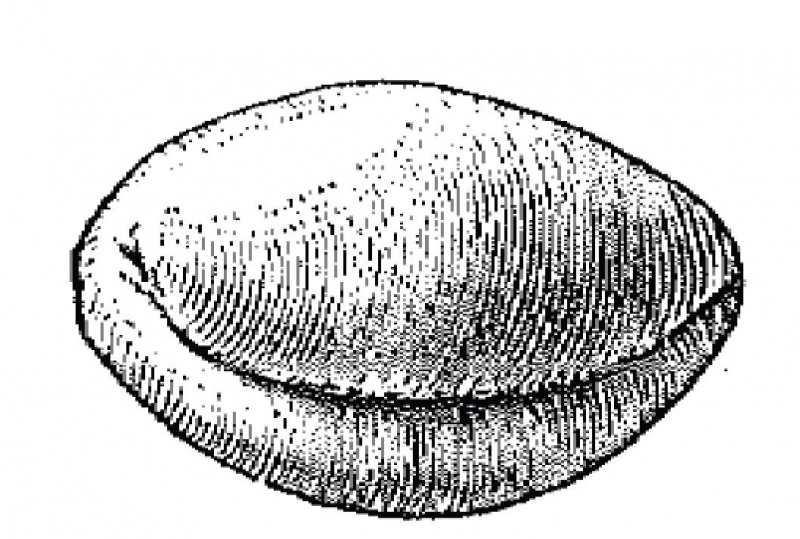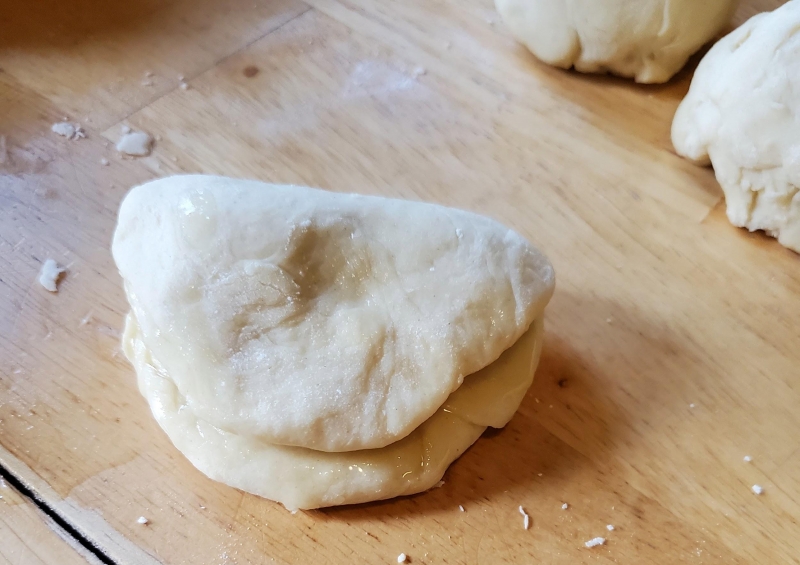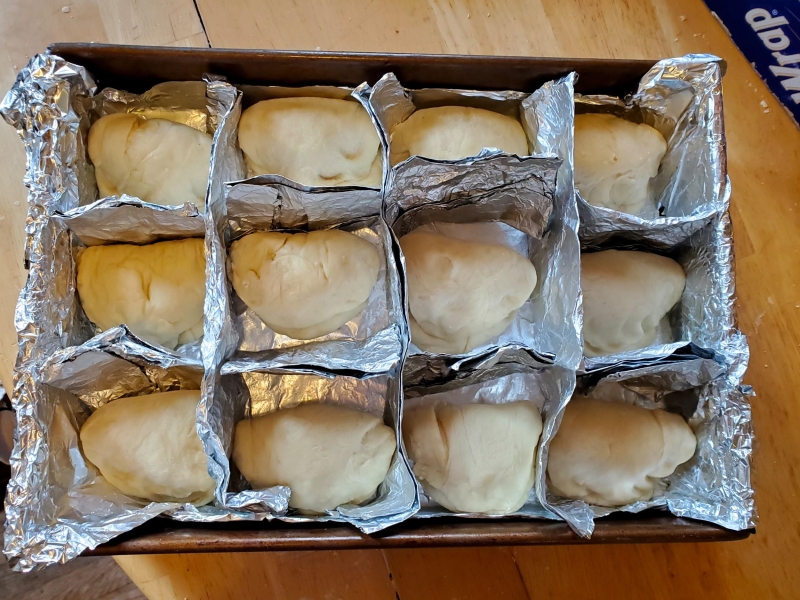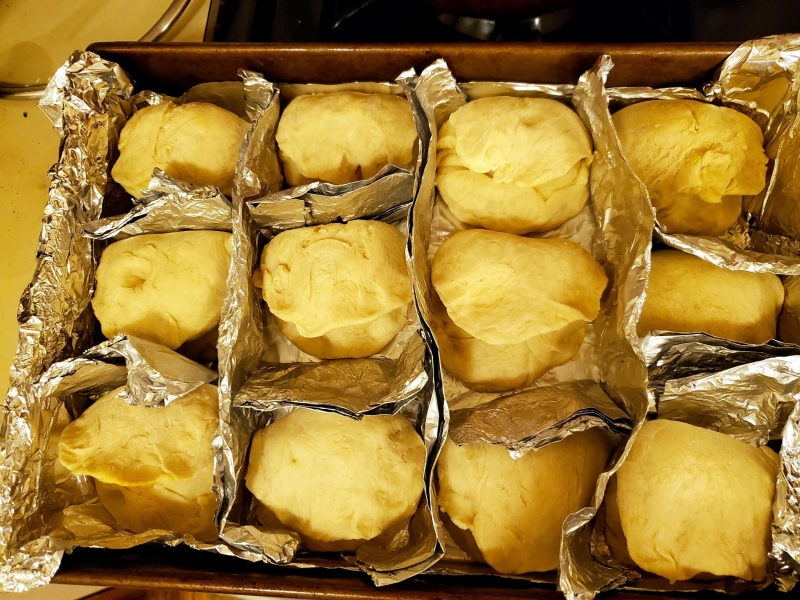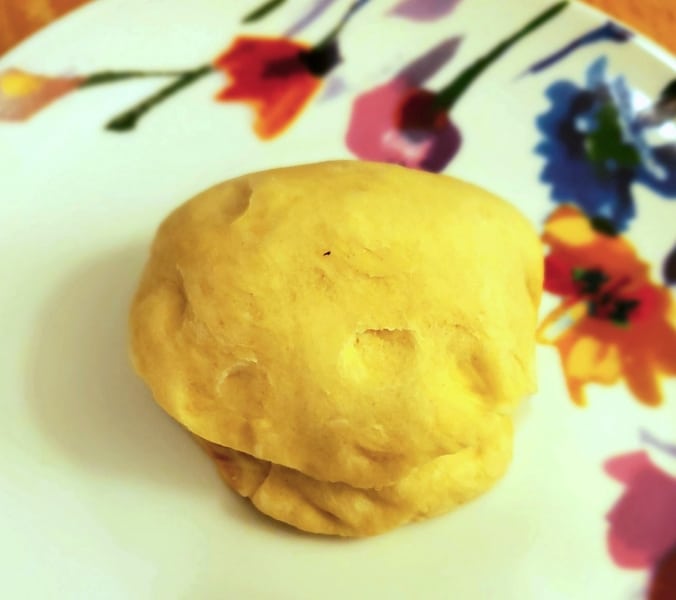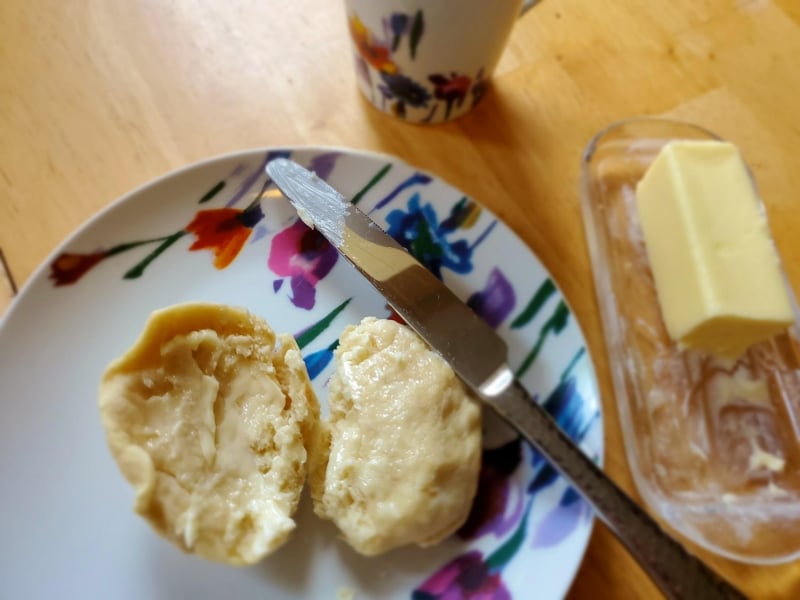French Rolls
Katie Maxwell, Visitor Services Coordinator
SOURCE: FRANCES A. KEMBLE. The Manuscript Receipt Book and Household Treasury. Philadelphia: claxton, Remsen & Haffelfinger, c. 1870, page 144. ROUGHWOOD COLLECTION.
I was pretty excited for this recipe. I’ve just started making simple, no knead bread in a dutch oven, and I’m ready to expand. (I even bought a digital food scale.) This 1870 recipe can be found on pages 57 and 58 of 35 Receipts from “The Larder Invaded” by William Woys Weaver. I will be following the modernized version as it has some more detail for the novice roll baker.
The Ingredients:
For 16 rolls:
2 tblsp. butter
1 lb. flour, double sifted (approx. 3 ½ cups)
1 egg
¾ cup milk
¼ oz pkg. Yeast dissolved in
¼ cup lukewarm milk
1 tsp. salt
I have weighed my ingredients and know for a fact that they are the correct amounts. This will be important later.
Rub the butter into the flour by working it through a sieve.
The recipe doesn’t say what temperature the butter should be. I guessed room temperature. It made it through the sieve anyway.
Beat the egg to a froth; add the milk and the proofed yeast.
The yeast dissolved, but it didn’t seem to get as foamy as it usually does in warm water.
All the wet ingredients.
Beat thoroughly; then make a hole in the center of the flour, and pour the liquid in it.
Using a large wooden or plastic fork, work this up into a soft dough.
This is as mixed as I can get it using just a wooden spoon. To make a soft dough, some kneading is required. (If you have a stand mixer with a dough hook attached, that would work nicely.)
After about ten minutes of kneading by hand.
Cover and let rise until double in bulk.
One hour later.
Knock down
There is something very satisfying about punching bread dough.
And mold out into 16 2-oz. Balls of dough. Weighing them will ensure uniform size.
Now things are getting interesting. I portioned out 2 oz rough balls of dough. As you can see, clearly 2 oz. However, this is what happened:
I have twelve two-ounce pieces and one extra piece weighing 1.3 ounces or 32 grams. I know my measurements at the beginning were correct. Someone’s math is wrong. Rather than determining whose, I divide up the extra piece among the twelve balls.
Take the small rolling pin
I don’t have a small rolling pin. I have a rolling pin sized rolling pin.
And roll each ball so that it is somewhat flat on top and beginning to take an oblong shape. Brush the surface with melted butter,
And then fold it over.
Dr. Weaver included this helpful illustration on page 58.
I’m not quite sure I’m doing this right. It doesn’t exactly look like the picture.
Repeat this with each ball of dough. Set the rolls in a greased French roll pan
I don’t have a French roll pan.
(failing that, use a baguette pan)
I don’t have a baguette pan either.
And let them rise one hour.
Here is my improvised french roll pan. This is very much aluminum foil.
Bake in an oven preheated to 425 ℉ for 10-12 minutes. Brush with cold water as soon as they are done.
Here they are after about 12 minutes. They didn’t stay folded, but that will not prevent me from eating delicious carbohydrates. I’m not sure what the cold water does.
Cool on racks.
I waited a little bit, but just had to eat one while it was still warm.
It’s very soft and somewhat fluffy. It doesn’t have a crisp crust, but I don’t know if it is supposed to.
It also makes a very nice breakfast the next day, especially after warming the roll in a toaster oven.
Next time, a return to vegetables with pickled cabbage.

